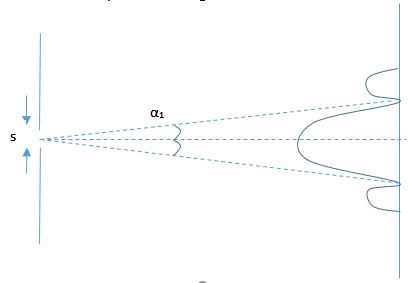Here is an elementary proof of your equality.
In the picture below,you see that the segment $A_2 P$ is the path-length difference between the ray reaching the point $P$ from the slit $A_2$ and the ray from the slit $A_1$ .
I the triangle $A_1 PB$ the edges $PA_1$ and $PB$ are equal, and if the angle $A_1 PB$ is small, the line OP can be considered perpendicular on the line $A_1 B$. That means, since the segment $OA_1$ is also perpendicular to $OC$, that the angles $θ_1$ and $θ_2$ are equal. So, the triangles $OA_1 D$ and $A_1 PD$ are equivalent, and we have the relation $\dfrac {PC}{OD} = \dfrac{PD}{OA_1}$.
Translating to your symbols,
$$
\frac{1}{2} \dfrac{s}{OD} \approx 2\dfrac S d
\tag{1}
\, .$$
(When equating PD with S, I neglected OD in comparison with PD.) I wrote $\dfrac s2$ because you need the distance between two maxima, and PC is only half of this.
Now, in order to have a maximum of intensity at the point P, the distance $A_2 B$ has to be an integer of $\dfrac \lambda 2$. Notice that, again for small angles $\theta$, $A_2 B \approx 2 \times OD$
Introducing in (1) we get
$$
\dfrac{s}{A_2 B} \approx \dfrac{2S}{d}
\tag{2}
\, ,$$
which implies your equality
$$
\dfrac s \lambda \approx \dfrac S d
\, .$$




